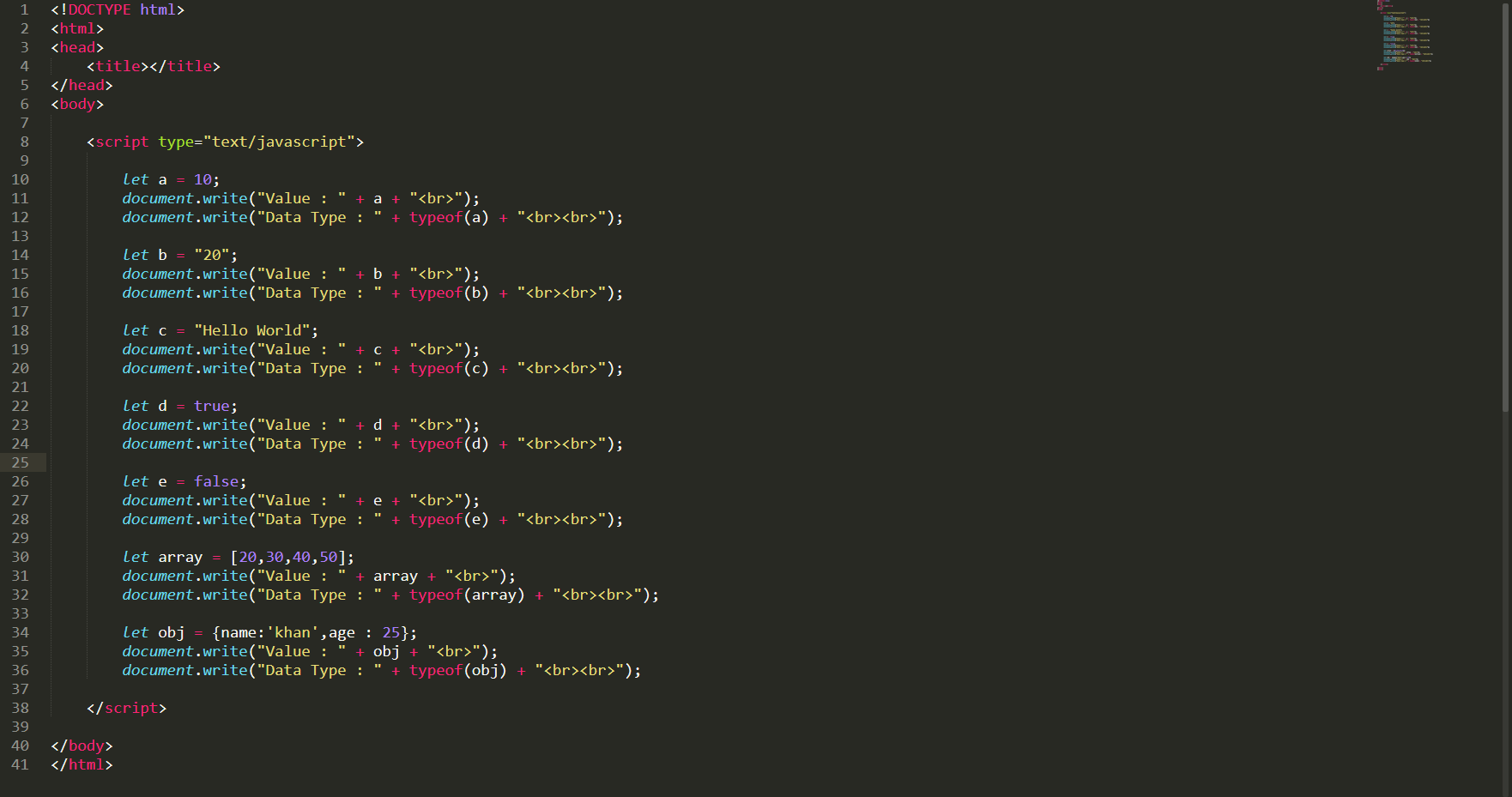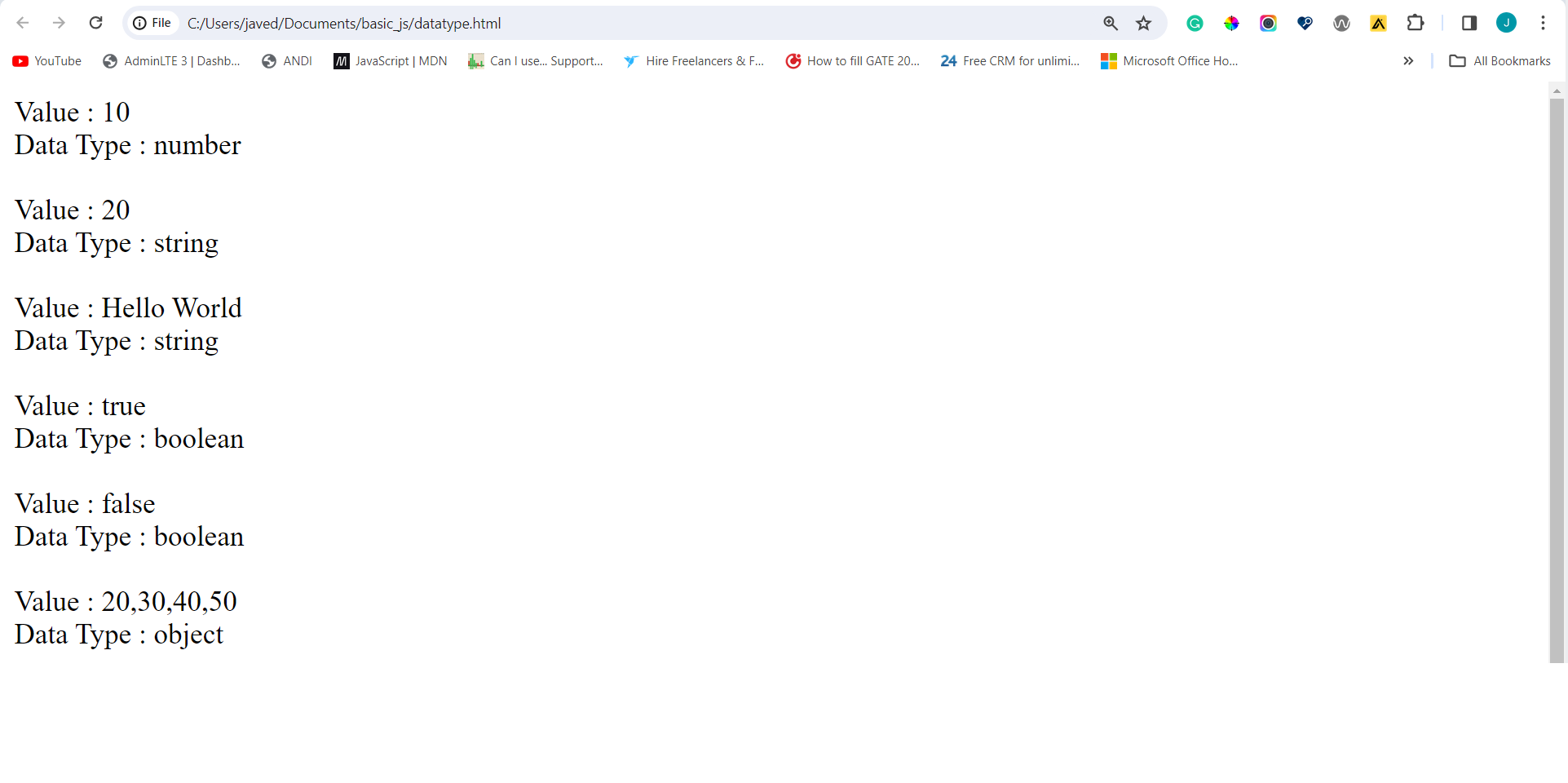Understanding Data Types in JavaScript
JavaScript, as a versatile and dynamically-typed language, relies on various data types to handle different kinds of information within your programs. Understanding these data types is crucial for effective programming and data manipulation.
1. Primitive Data Types:
String: Strings represent sequences of characters and are enclosed within single (”) or double (“”) quotes. Example:
"Hello, World!".Number: Numbers include both integers and floating-point values. Example:
42or3.14.Boolean: Booleans represent logical values, either
trueorfalse.Undefined: A variable that has been declared but not assigned a value is of type
undefined.Null: Represents the intentional absence of any object value.
Symbol (ES6 and later): Symbols are unique and immutable primitive values, often used to create object properties that are not easily accessible.
2. Composite Data Types:
Object: Objects are complex data types that group data and functionalities. They consist of key-value pairs, where keys are strings or symbols, and values can be any data type.
Array: Arrays are ordered lists of values, identified by indices. They can contain a mix of data types.


